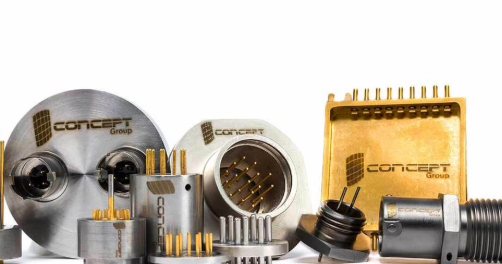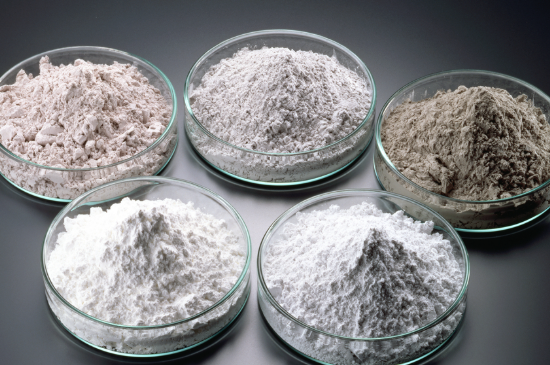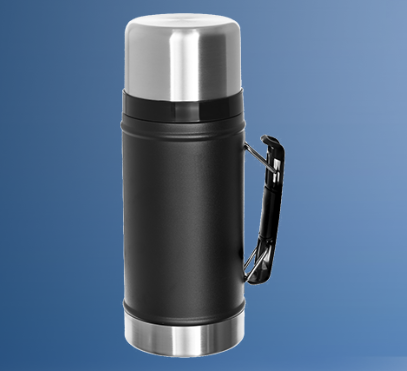Low Temperature Glass to Metal Sealing: A kind of Specialty Glass
Release time:2025-09-23
This blog delves into low-temperature glass-to-metal sealing, a crucial technique used in various industries requiring reliable, durable, and airtight seals. With a focus on its unique properties, methods, and applications, the article provides an in-depth look at how this specialty glass contributes to the efficiency and safety of systems in extreme conditions.
What is considered specialty glass?
-Glass-to-Metal Sealing Glass
-Glass Ceramics
- Low-E (Low Emissivity) Glass
what is hermetically sealed?
-What are the methods of hermetic sealing?
-What's the difference between airtight and hermetic?
Best low temperature glass to metal sealing
-What is Low-Temperature Glass-to-Metal Sealing?
-Material Selection for Low-Temperature Sealing?
What are the applications for specific types of seals?
-Custom Glass-to-Metal Seals
-Steatite ceramic beads and sealing glass combination
-Application of glass preform in vacuum flask
FAQs
-Is specialty glass stronger than regular glass?
-Is specialty glass more expensive?
-What Are the Advantages of Glass-to-Metal Sealing in Low-Temperature Environments?
What is Considered Specialty Glass?

Specialty glass refers to any type of glass that is engineered to possess unique characteristics tailored for specific applications. Unlike regular glass, which is mainly used for general purposes like windows or containers, specialty glass is designed for high-performance environments, offering enhanced features such as thermal resistance, strength, optical properties, and the ability to create strong seals with metals.
Glass-to-Metal Sealing Glass
Glass-to-metal sealing glass is specifically designed to create a durable, airtight, and high-strength bond between glass and metal. This is particularly important in applications where the components must remain sealed under extreme conditions, such as high temperatures or pressure. This type of glass is engineered with special properties to ensure a consistent and reliable seal over time.
Glass Ceramics
Glass ceramics are a unique category of specialty glass that combine the properties of glass and ceramics. They exhibit high thermal resistance and durability, making them ideal for applications that involve significant temperature fluctuations. Common uses include cooking surfaces, heat exchangers, and even medical implants.
Low-E (Low Emissivity) Glass
Low-E glass is a specially coated glass designed to reflect infrared and ultraviolet light, enhancing energy efficiency. It helps maintain temperature stability by reducing heat transfer, making it especially useful in building windows, automotive glass, and solar panels. Low-E glass plays a significant role in energy conservation while maintaining visibility and light transmission.
What is Hermetically Sealed?

Hermetic sealing refers to the process of creating a completely airtight seal between two surfaces, typically between glass and metal. This ensures that no air, moisture, or other contaminants can penetrate the sealed area, providing a long-lasting and highly secure enclosure. Hermetic seals are critical in applications where preservation of the contents or maintenance of vacuum environments is essential.
What Are the Methods of Hermetic Sealing?
There are several methods used to create hermetic seals, each chosen based on the materials involved, the environmental conditions, and the desired longevity of the seal.
Glass-to-Metal Sealing: This method involves the fusion of glass and metal, where the glass melts and flows over the metal surface, forming a tight, airtight bond when it cools.
Laser Welding: Laser welding uses concentrated beams of light to fuse metal parts together without the use of filler material. This is often employed in precise electronic or aerospace applications.
Soldering: In this method, a low-melting-point material is used to join two metals together, ensuring an airtight seal. This is typically seen in lower-temperature applications.
Resin Bonding: Specialized resins can be used to bond materials together, often employed in electronics or medical devices that require sealed enclosures but are sensitive to high temperatures.
What's the Difference Between Airtight and Hermetic?
While both airtight and hermetic seals prevent the entry of air, there is a subtle difference. An airtight seal refers to a closure that blocks air and moisture, typically preventing leakage. A hermetic seal, on the other hand, goes further by creating a completely impermeable barrier to not only air but also gases, liquids, and even microorganisms. This makes hermetic seals more robust and suited for critical applications such as in electronics or high-end medical equipment.
Best Low-Temperature Glass-to-Metal Sealing

Low-temperature glass-to-metal sealing refers to the process of creating a durable, high-strength bond between glass and metal, specifically designed for use in low-temperature environments. This sealing technique is essential in industries where components need to operate in extreme conditions, such as aerospace, cryogenics, and certain medical equipment.
What is Low-Temperature Glass-to-Metal Sealing?
Low-temperature glass-to-metal sealing typically occurs at temperatures ranging from -196°C (the temperature of liquid nitrogen) up to around 300°C. This sealing process is crucial in ensuring the structural integrity of systems exposed to fluctuating or extremely low temperatures. The sealing process involves using specially formulated glass materials that expand and contract similarly to the metal they are sealing, thus avoiding cracks or failure due to thermal stress.
Material Selection for Low-Temperature Sealing
The selection of materials for low-temperature glass-to-metal sealing is critical. Glass materials such as borosilicate or aluminosilicate are commonly chosen because of their low thermal expansion and high durability. Metal components, such as stainless steel or certain alloys, are selected for their strength and compatibility with the glass material. The glass and metal must expand and contract at similar rates to avoid damage under temperature changes.
In addition, the manufacturing process needs to be tightly controlled to ensure that the glass and metal bond correctly. Variations in temperature or material properties can lead to seal failure, which is why the use of high-quality materials and precise techniques is vital.
What Are the Applications for Specific Types of Seals?

Glass-to-metal seals play a significant role in many industries, offering protection, durability, and reliability in extreme conditions. Here are a few common applications:
Custom Glass-to-Metal Seals
Custom seals are often designed for unique applications where standard seals may not be effective. These seals are tailored to fit specific requirements, such as custom shapes, sizes, and temperature ranges. They are used in industries such as electronics, telecommunications, and medical devices, where precise and reliable sealing is crucial for product performance.
Steatite Ceramic Beads and Sealing Glass Combination
In some applications, glass-to-metal sealing is combined with ceramic materials like steatite to provide a robust, durable seal. Steatite ceramic beads are often used for electrical insulation, and when paired with sealing glass, they provide a reliable hermetic seal for high-performance devices such as sensors, resistors, and capacitors.
Application of Glass Preform in Vacuum Flask
Vacuum flasks often rely on glass-to-metal seals to create a completely airtight environment. The glass preform is inserted into a metal casing, and a hermetic seal is created to ensure that the vacuum inside the flask is maintained. These seals are also used in other vacuum applications, such as in scientific instruments and industrial processing equipment.
FAQs
Is Specialty Glass Stronger Than Regular Glass?
Yes, specialty glass is typically stronger than regular glass due to its enhanced properties, such as increased resistance to heat, mechanical stress, or chemical damage. The manufacturing processes used in specialty glass production, such as tempering or coating, contribute to its superior strength compared to regular glass.
Is Specialty Glass More Expensive?
Yes, specialty glass tends to be more expensive than regular glass because it is produced with higher-quality materials and more advanced manufacturing processes. However, the investment is often justified by the superior performance and longevity of the glass in critical applications.
What Are the Advantages of Glass-to-Metal Sealing in Low-Temperature Environments?
Glass-to-metal seals offer numerous advantages in low-temperature environments, including:
1.Durability: The seals provide long-lasting, stable performance even under extreme temperature fluctuations.
2.Airtight Integrity: They prevent the entry of air, moisture, or other contaminants, ensuring a secure environment for sensitive components.
3.Thermal Stability: These seals are designed to withstand rapid temperature changes without failure, making them ideal for use in cryogenics, aerospace, and other low-temperature applications.
Low-temperature glass-to-metal sealing is a critical technology in a range of industries that require reliable and durable seals under extreme conditions. With the ability to withstand temperature variations and provide airtight protection, these seals are essential in fields like aerospace, electronics, medical devices, and cryogenics. Spcera, a leading brand in specialty glass solutions, ensures that their low-temperature glass-to-metal sealing products are engineered to meet the highest standards of durability and performance. By selecting the right materials and manufacturing processes, Spcera's low-temperature glass-to-metal sealing solutions guarantee the longevity and efficiency of the systems they protect. Whether you're involved in cutting-edge technology or essential infrastructure, understanding Spcera's offerings can help ensure your products are sealed to perfection.






